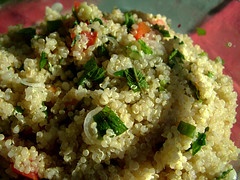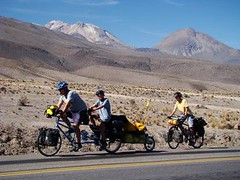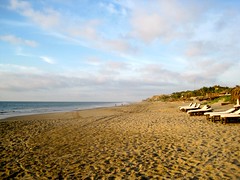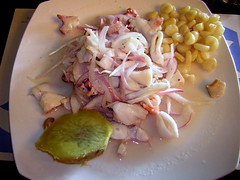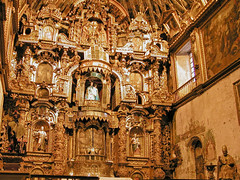Quinoa – The Mother Grain
Quinoa, the grain of the Incas, has been cultivated in the Andean highlands of South America for over 7000 years, yet it is a relative newcomer on the international market. Pronounced “keen-wa”, quinoa comes from the Quechua language spoken by many indigenous people in South America.
It was one of the most sacred foods of the ancient Incas, a plant so nourishing, delicious and vital, they called it chesiya mama; the ‘mother grain’. Each year the Incan emperor so it is said would, using a golden spade plant the first quinoa seeds of the season. At the solstice, priests bearing golden vessels filled with quinoa made offerings to Inti; the sun.
With the European conquest, the cultivation of quinoa was suppressed possibly because it had a religious significance for the Incas, however, the Andean people continued to grow it in small amounts. In the late 1900’s interest in quinoa began in Bolivia, Peru, Ecuador, and Chile. That interest has now spread to North America, Europe, and Asia. There is some quinoa being cultivated in Colorado and Canada; but only a few varieties will grow and the climatic conditions are not advantageous.
 |
A gluten-free product, it is suitable for anyone afflicted by wheat allergies, easily digestible, and a perfect base for vegetarian dishes. Quick cooking, it holds well, and blends nicely with a wide variety of ingredients. Because of its high nutritional profile quinoa is sold in health food stores; but gourmets are now recognizing it for its pleasing flavor and crunchy texture.
The plant is a broad-leafed, annual herb that grows wild. When mature, this tall plant is topped off with large plume-like seed heads that range in colour from vivid red, orange or yellow to black or white. Before being eaten, quinoa seeds must be processed to remove their bitter coating of saponin. After washing or dry polishing, the ready-to-cook seeds are white or beige in colour.
Quinoa whole grain Quinoa is not a true cereal grain, but rather the botanical fruit of an herbal plant. It is however treated as a grain in cooking. The grains are small yellow flattened spheres, approximately 1.5 to 2 mm in diameter. When cooked, the germ coils into a small “tail” that lends a pleasant crunch. The leaves of the plant can also be eaten raw in salads or cooked like spinach and Quinoa flour lends a delicate nutty flavor to quick breads.
Quinoa can be eaten as hot breakfast cereal; an infant cereal; a rice replacement; a nutritional thickener for soups, chilli and stew; in salads, casseroles and desserts; and more.
Quinoa’s spinach-like leaves and its seeds are highly nutritious. The leaves, which unfortunately seldom reach the ‘modern’ consumer, may be eaten raw in salads or cooked like spinach. They are high in Vitamin A. The seeds that are now readily available are rich in protein, high in fibre, and particularly rich in the amino acid Lysine.

|
The ‘seeds’ are also good sources of calcium, phosphorus and vitamins B and E. There are several varieties of quinoa available in shops, which range in colour from dark brown to near white. The latter varieties are most common and are considered superior. If storage beyond 3-4 weeks is required it should be stored in the refrigerator or even the freezer.
Once cooked, quinoa is delicious and extremely versatile; it may be used in the place of almost any other grain, including rice, to make everything from appetizers to desserts to pasta. You can even substitute it in your favourite recipe for rice pudding!
Quinoa salad How come it is only just becoming popular now? Why then, unlike the other Inca “wonder foods” maize and potatoes, is it so little known outside of South America? This question has never really been answered, but one theory is that the Spaniards who carried maize and potatoes back to Europe in the sixteenth century may have tasted quinoa that had not been properly processed and would have been bitter to the palate and therefore failed to realise its potential.
Fortunately though, the skilful farmers of the Andes continued to cultivate it and, thus, presented this ancient “supergrain” for the modern world.
Some Quinoa recipes:
– Quinoa Salad
– Quinoa, Cashew and Grape Salad
– Quinoa with mushrooms
– Quinoa-Stuffed Peppers
– Quinoa Chard Pilaf
– Quinoa Squash Pilaf
– Quinoa Vegetable Soup
– Mediterranean Quinoa
– Shrimp and Quinoa
– Quinoa Pudding
Original Article by Living in Peru.


